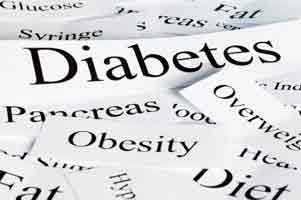One in Every Three People with Type 1 Diabetes Produces Insulin Years Post-Diagnosis
Largest Study to Date of Residual Insulin Production Proves Such Patients Are Not ‘Exceptional’ – Major Clinical and Health Policy Implications
 About one-third of people with type 1 diabetes (T1D) produce insulin, as measured by C-peptide, a byproduct of insulin production, even upward of forty years from initial diagnosis, according to a first-of-its-kind, large-scale study conducted by researchers from T1D Exchange. This sheds new light on the long-accepted belief that these patients lose all ability to produce any insulin; this could have significant policy implications, said researchers from T1D Exchange, whose Clinic Network involves a national consortium of diabetes centers. The findings were published online this week in Diabetes Care.
About one-third of people with type 1 diabetes (T1D) produce insulin, as measured by C-peptide, a byproduct of insulin production, even upward of forty years from initial diagnosis, according to a first-of-its-kind, large-scale study conducted by researchers from T1D Exchange. This sheds new light on the long-accepted belief that these patients lose all ability to produce any insulin; this could have significant policy implications, said researchers from T1D Exchange, whose Clinic Network involves a national consortium of diabetes centers. The findings were published online this week in Diabetes Care.
Using samples from the T1D Exchange Biobank, a repository of type 1 diabetes biological samples, the study confirmed that C-peptide is present in patients across a wide age spectrum, with greater frequency and higher values in those diagnosed as adults as compared with those diagnosed as children. The findings provide clinicians proof that residual insulin production can be anticipated in this population, thereby potentially decreasing the risk of misdiagnosis as the more common type 2 diabetes and increasing opportunities for improved treatments to control glucose levels.
The data suggests important differences in the biological process of type 1 diabetes between those diagnosed as children or as adults, according to investigator Asa K. Davis, Ph.D., T1D Exchange program manager at Benaroya Research Institute, which houses the TID Exchange Biobank.
“These findings lend further credence to research underway on targeted therapies that could prolong insulin production, helping type 1 diabetes patients better manage their disease and reduce complications,” said Davis. “For example, potential immunotherapy treatments are already being studied with this goal in mind, and our findings underscore that those diagnosed at a young age may be more likely to benefit from such new approaches.”
Approximately 35 million people worldwide are living with type 1 diabetes, and over 30,000 new patients – half of whom are children – will be diagnosed this year in the U.S. alone. Type 1 diabetes accounts for about five to 10 percent of all diabetes cases and results from an immune-mediated destruction of insulin-producing pancreatic beta cells, beginning long before – and believed to continue long after – the clinical diagnosis.
The researchers measured C-peptide levels in 919 people with type 1 diabetes, ranging from three to 80 years from diagnosis (and from age five to 88), at 28 of T1D Exchange’s 70 Clinic Network locations. Among the participants with three-to-five year disease duration, C-peptide was present in 78 percent of patients diagnosed after age 18, and in 46 percent of those diagnosed before age 18.
Further, 16 percent of adult-onset type 1 individuals and six percent of childhood-onset type 1 diabetes cases had residual C-peptide more than 40 years from diagnosis, the researchers found.
“Other studies have shown that some type 1 diabetes patients who have lived with the disease for many years continue to secrete insulin and the assumption has been that these patients are exceptional,” said senior author Carla J. Greenbaum, M.D., director, T1D Exchange Biobank Operations Center at the Benaroya Research Institute. “For the first time, we can definitively say that these patients are a true subset of the type 1 diabetes population, which has major clinical and health policy implications.”
Based on the new data, for example, as many as 10 percent of type 1 diabetes patients overall and 20 percent of those diagnosed as adults may not meet Medicare, Medicaid, and many private insurers’ criteria for an insulin pump, which is based on clinical proof of autoimmunity and a lack of insulin production, Greenbaum said.
“Diabetologists have been, at times, confounded by the problem of patients being denied an insulin pump because their C-peptide levels defy the classic definition of the disease,” Davis added. “We can now quantify the number of patients who demonstrate continued insulin production, which will lead to raised awareness among general practitioners and insurers.”
A Breakthrough Approach to Advancing Research and Treatment for Type 1 Diabetes

